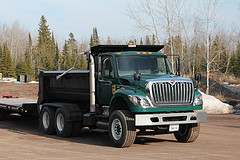 The first step toward implementing an automated fuel system is self-assessment. Ask yourself:
The first step toward implementing an automated fuel system is self-assessment. Ask yourself:
- Can we easily and quickly account for all fuel assets?
- Do we gather information manually or automatically?
- Are we able to obtain enough data to operate efficiently and plan effectively?
- What are our current system’s weaknesses that could be costing us in time, money, productivity or inconsistent vehicle maintenance that results in problems, etc.?
What do you need that your current fuel system doesn’t deliver?
Your needs and the level of investment that’s comfortable for you will drive your choice of automated fuel system.
FuelMaster ProKees can make a tremendous difference – the City of Tallahassee realized a 97% reduction in fuel loss – but it’s not entirely automated in terms of operation or data capture. FuelMaster AIM is completely hands-free, provides virtually 100% fuel security and electronically gathers information that can assure on-time vehicle maintenance and help identify over-the-road efficiencies, too.
What will your new automated fuel system include?
Consider:
- The number of vehicles being fueled.
- The number of fueling locations and how many will be included in your new system.
- Whether you’ll have to replace aging dispensers during retrofitting.
Municipalities or companies with multiple departments should involve everyone in the discussion about needs and expectations, to ensure the right choices are made and coordination of implementation goes smoothly and as expected.
Talk to an expert.
A professional can help evaluate your situation, making sure you’re asking the right questions and considering options in detail. You’ll get an implementation quote customized for your operation’s unique requirements. And if you need to substantiate the need for an automated fuel system to others, your consultant can help build that case with supporting data and case histories.
Municipalities may be able to issue a capital outlay bond to pay for consultants, contractors, equipment and retrofit work, using savings generated by the new automated fuel system to help retire bond debt.
You’ve made a decision and you’re ready to proceed.
Hire a fuel management implementer, perhaps your initial consultant. Survey each location to determine the exact improvements needed, to determine costs per site and create a guide for your retrofit contractor to follow.
Once the retrofit is complete, your implementer will work with you to ensure your software and electronic components are working properly, so your automated fuel system can start generating improvements right away.
Photo Credit: Clinton Little
